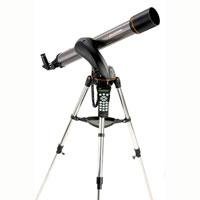Saturday, November 19, 2011
Thursday, November 3, 2011
Celestron NexStar 80 SLT Computerized Telescope
!9# Celestron NexStar 80 SLT Computerized Telescope
A step up from the 60mm model, the NexStar 80 SLT Refractor gives images that are bright and crisp. The 80 SLT offers 80% brighter images than the 60mm scope. Like the other models in the SLT Series, the 80 SLT comes with a fully computerized hand control with a database of over 4,000 celestial objects! With its pre-assembled, adjustable steel tripod, the NexStar 80 SLT can be up and ready to use in a matter of minutes. The SkyAlign alignment technology and the included StarPointer Finderscope with a red LED makes aligning a breeze. A wonderful first-time astronomical scope, the 80 SLT can also be used as a great, land-based spotting telescope with optional erect-image diagonal. SkyAlign With Celestron's revolutionary new alignment technology, setting up and using a computerized telescope is faster and easier than ever before! Point the telescope at three bright objects in the sky and the telescope tells YOU what the objects are. You do not need to know the names of the stars - you can even pick the moon or bright planets! SkyAlign is the easiest method to align a computerized telescope, it's perfect for beginners and provides the convenience and accuracy demanded by experienced users. SkyAlign is the only alignment method where you truly do not have to know the night sky - and it's only available from Celestron.
Herbert Hoover Biography Cheap Lifepak 15 Quickly Cheap Coffee Machines Saeco
Wednesday, November 2, 2011

